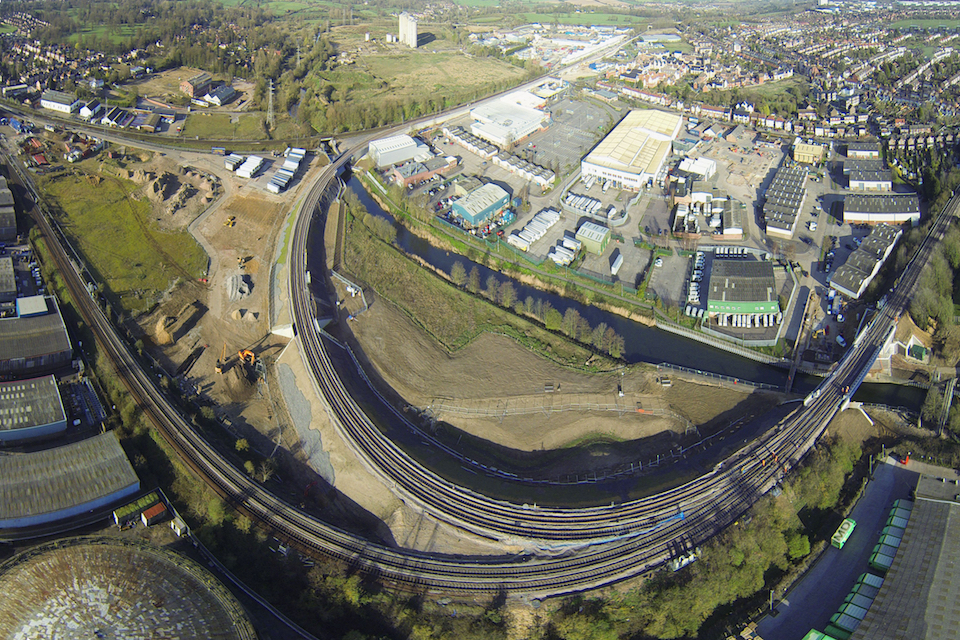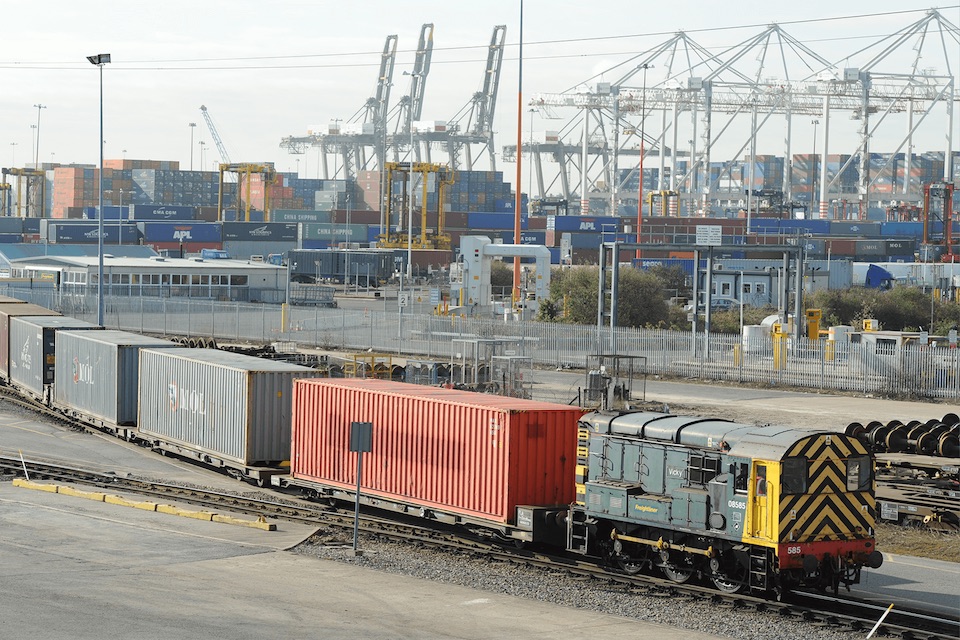Political parties weigh anchor on rail freight from Suffolk ports

Rail freight from Felixstowe may not be the defining issue of the forthcoming UK General Election. However, the broader question of rail freight development is on the agenda of all the major political parties. With less than a month until the UK goes to the polls, the level of traffic in the east of England could be a bellwether for rail freight policy.
Freight belongs on the rail. It is a slogan that, so far, none of the political parties has expressed. If they did, it would ironically be on the side of a campaign bus. If it were in Suffolk, it would probably be on a bus stuck in traffic on the A14 east-west road. Rail’s stubbornly low overall market share of the freight logistics market is something that could make a huge difference to the economy. That message has not been lost on the politicians hoping to have a seat in the House of Commons in the first week of July.
Wider economic factors
In Suffolk, Felixstowe may be the biggest player, but it is not the only game in town. The vast container port (and the adjacent but somewhat diminished ferry port of Harwich) generates the vast majority of rail freight traffic. Felixstowe is well known as the busiest rail freight terminal in the UK. However, the other Suffolk ports are significant, too. Both Ipswich and Lowestoft are key economic drivers, each uniquely contributing to the region’s logistical landscape.

Despite Ipswich and Lowestoft both boasting rail connections, neither is anywhere near as active as Felixstowe. That terminal, one of the busiest in the world, stands out as the busiest intermodal rail freight terminal in the UK. However, the nature of logistics in the UK means that even Felixstowe still has a heavy reliance on road freight. That manifests itself, in particular, along the A14 road. That has raised concerns about traffic congestion and environmental impacts, prompting a closer look at the potential for greater use of rail freight.
Improvements to road, rail, or both
The Port of Felixstowe, the largest container port in the UK, plays a crucial role in the region’s economy. Thousands of container lorries traverse Suffolk’s roads daily, with the A14 (east-west) and A12 (north-south) taking the brunt of this traffic. The Department for Transport reports that heavy goods vehicles (HGVs) account for 13.5 per cent of the 60,000 vehicles on the A14 near Ipswich each day, exacerbating congestion.
Business organisations support efforts to shift more freight from road to rail. The independent membership-supported Eastern Powerhouse advocates the electrification of rail lines at Felixstowe and upgrades at Bury St Edmunds. The Suffolk Chamber of Commerce echoes these sentiments, urging the next government to address road pinch points and prioritise rail junction upgrades at Ely and Haughley.
Industry perspectives are mixed
The maritime industry has also said it would welcome greater rail freight activity. Maersk, the Danish shipping multi-national, operates some of the biggest container ships in the world out of Felixstowe. Gary Jeffreys, Managing Director for Maersk in the UK, has told local media and the national broadcaster, the BBC, why his company recognises the need for improved rail infrastructure. His company has already invested in rail as part of its logistics operations, and he says that both government and local authorities need to ensure the availability of rail paths.

However, the road haulage industry tempers that enthusiasm with a different view. The Suffolk-based Bartrums road haulage has highlighted the logistical challenges and the need for businesses to maintain control over their deliveries. Interviewed locally, their managing director, Tremanye Johnson, said that the majority of their deliveries required local distribution in a curtain-sided trailer. In other words, shorter haul or loads less than a container will always be the majority of logistics moves. Ironically, Bartrums headquarters is only a few minutes from Haughty Junction, one of the critical pinch points on the county’s rail network.
Rail freight plays with politics
The principal political parties have varying approaches to addressing these logistical challenges and promoting rail freight. The current Conservative government aims to grow rail freight by at least 75 per cent by 2050, highlighting a long-term commitment to enhancing rail logistics. However, the Conservatives are widely tipped to be defeated in the election on 4 June. The opposition left-wing Labour Party, which may well form the next government, supports keeping freight operations in the private sector but aims to simplify the system to make it more efficient and user-friendly.

It is possible that the Liberal Democrats could win enough representation to hold the balance of power, and the adoption of their policies could be critical to the next government. The Liberal Democrats advocate for the extension and completion of rail network electrification, aligning with industry calls for infrastructure improvements. The environmentally-led Green Party holds less power in the UK than in other European states. nevertheless, the Greens propose a more radical approach, aiming to reduce the demand for freight transport by localising the economy and expanding the rail network. They also suggest greater use of waterways where feasible.
Suffolk may be a microcosm of rail freight policy in the UK, but it is also a region more impacted than most by the current situation. Rail infrastructure enhancements and modal-shift issues are more apparent than elsewhere. It is possible that rail freight could play a bigger part in deciding the outcome of polling in the region. It would be quite remarkable if the issues in Suffolk played a pivotal role in forming the next UK government. Then again, in an election where the slightest misstep could mean defeat, a slight change of attitude could also spell victory at the ballot box.
You just read one of our premium articles free of charge
Want full access? Take advantage of our exclusive offer




